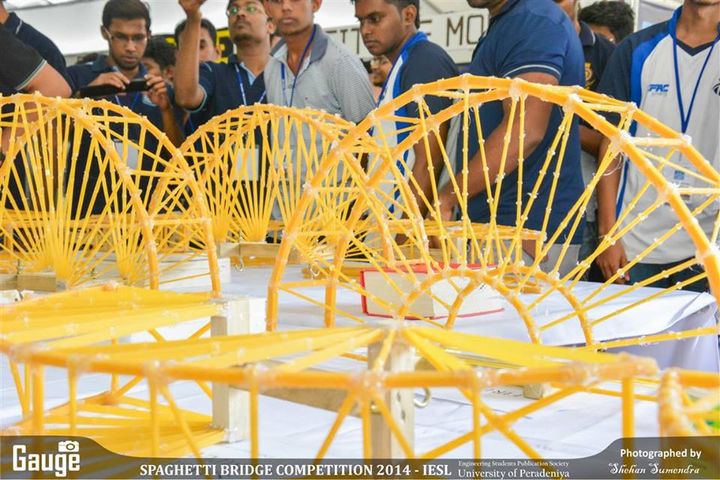5G Evolution - Slingshots at Gbps

Well, this topic may sound somewhat familiar to you because putting numbers in front of the letter G and counting them has been a common trend over the last three decades. People used to say “Oh! 3G? So, it’s fast..”. But then again, now they say “Oh!! 3G?? Not so fast.. 4G?? so, it’s fast!”. What about 5G? Simply “wow!”. Folks have barely begun to feel the speed of 4G and yet 5G is here, waiting to embrace the world of mobile networks, soon.
The speed has been always the key feature in the evolution of mobile generations. However, speed is not the only thing 5G will bring to your palm. Although in 2013, Samsung tested 5G at 1Gbps, Prof Rahim Tafazolli, who is the lead of 5G innovation center at the University of Surrey, believes that it is possible to run a 5G connection at a much higher speed. If you’re just thinking “How fast?”, you may convert your dream speed of 800 Gbps into a reality. And that means downloading 33 HD films in just one second.
As foretold, the speed is not the only gift of 5G. It is capable of supporting the Internet of things, which is the network of things embedded with electronics, software, sensors and network connectivity. And that also contributes to high speed connectivity of smart grids. Devices which are connected through 5G will be able to choose dynamically between three different bandwidths to avoid the overloading of the frequencies. It won’t be just ordering your oven to fry a chicken leg or washing your clothes in a remote controlled washing machine; it will connect driverless electric cars around the world and even tell you which hospital you should visit, by monitoring your health through the electronic wrist band you carry.

One of the main problems we face with the introduction of new generations of mobile communications is the limited availability of the radio frequency spectrum. Larger speeds require higher bandwidths and cellular operators are having a bad time in a bidding war for a small strip of the spectrum of ultrahigh frequency band. According to the radio engineers, the frequency range between 300 and 3000 MHz is considered best for mobile networking.
They have implemented wireless standards comprising all sorts of clever tricks to expand the today’s fourth generation cellular territories. Unfortunately the growing demand seems to be a troublemaker for all of these technologies because of the limited availability of spectrum makes it hard for them to sustain the oncoming traffic surge.
But there is no need to panic. New research has proved that the millimeter wave-band which was unused due to technical misbeliefs can be used for 5G networks. The millimeter wave band also called the extremely high frequency band ranges from 30 to 300 GHz. Estimations have shown that 100 GHz of this bandwidth can be used for mobile communication. And that means 100 times as much bandwidth as the networks we use today and downloads of up to ten gigabits per second. The credits of first successful millimeter wave signaling goes to Jagdish Chandra Bose, who demonstrated the world’s first millimeter wave signaling in 1895.
Surely the next question in your mind is “how about the antennas??”. Thanks to innovations, It’s now possible to transceive an entire millimeter wave using a single CMOS or a silicon germanium chip. With the help of these chips, they made smart-antennas that are capable of transceiving millimeter waves. Samsung’s 5g wireless prototypes use an array of tiny antennas, each about the size of an aspirin tablet.

What about current trends in 5g? Telstra and Ericsson have successfully tested the 1 Gbps capability of a commercial mobile network, using five separate 4G channels. It is said that anything beyond 1 Gbps is considered as 5G. Chinese telecom equipment provider ZTE has opened a new research and development center in Tokyo dedicated for 5G mobile network technologies. Recently at National Instrument’s NI week, which was held in Austin, Texas from 3-6 August 2015, both Nokia and Samsung showed off their 5G technologies. Samsung demonstrated FD-MIMO signal focusing while Nokia showed their 10 Gbps transmission at 73 GHz (FD-MIMO is full dimensional multiple-input, multiple output). Samsung also hopes to launch temporary trial 5G network in time for 2018”s winter Olympics while Huawei is racing to do the same kind of network in Moscow for 2018 Fifa world cup. And that’s just a glimpse of what’s happening around the world. The day where your car starts automatically and goes to pick up the kids at school with just a single phone call, is not far-away. And it will not be in Hollywood but in reality.
References:
- Rob Davis. (2015) 5G incoming: Telstra pushes 1Gbps barrier. [Online]. Available From : http://www.techradar.com/news/phone-and-communications/5g-incoming-telstra-pushes-1gbps-barrier-1308470
- Juan Pedro Tomas. (2015) ZTE opens 5G R&D center in Tokyo. [online]. Available From : http://www.rcrwireless.com/20151109/network-infrastructure/zte-opens-5g-rd-center-in-tokyo-tag23
- The 5G Infrastructure Public Private Partnership (n.d.) [online]. Available From : https://5g-ppp.eu/
- Ed Ram. (2014) How will the 5G network change the world?. [Online]. Available From : http://www.bbc.com/news/technology-30224853
- Jamie Hinks. (2015) 5 Things You Should Know About 5G. [Online]. Available From : http://www.techradar.com/news/world-of-tech/future-tech/5-things-you-should-know-about-5g-1288071
- Lauren J. Young. (2015) Telecom Experts Plot a Path to 5G. [Online]. Available From : http://spectrum.ieee.org/telecom/wireless/telecom-experts-plot-a-path-to-5g
- Douglas McCormick. (2015) Samsung, Nokia Shows 5G Tech at NI week. [Online]. Available From : http://spectrum.ieee.org/tech-talk/at-work/test-and-measurement/samsung-nokia-show-5g-tech-at-ni-week
- Theodore S. Rappaport, Wonil Roh & Kyungwhoon Cheun. (2014) Smart Antennas Could Open Up New Spectrum for 5G. [2015]. Available From : http://spectrum.ieee.org/telecom/wireless/smart-antennas-could-open-up-new-spectrum-for-5g
Reporter Pasindu Perera Second year, Department of Electrical & Electronic Engineering, Faculty of Engineering, University of Peradeniya.





